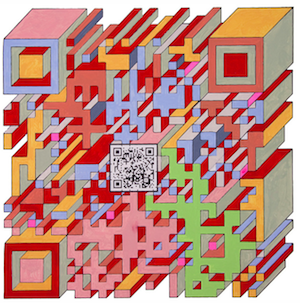View Session Details and Presenter’s Bio.

You’ve seen QR codes all over the place this year. But are you using them effectively?
Xavier University’s Cliff Jenkins sought to teach attendees how to use the ubiquitous codes better during his HighEdWeb 11 session Monday afternoon.
Developed by Toyota, the QR code entered the marketplace in Japan in 2002. The codes can hold embedded URLs, email addresses, contact information, social network integration, phone numbers or even map information. But…
“Right now, the way people are using QR, it sucks,” Jenkins said.
The QR code is suffering from a “me too” crisis, he said. People are slapping a QR code on something to be hip or techie and taking the user for granted, Jenkins said.
Jenkins suggests QR codes need to offer the user something. There’s no reward for most codes and there was some effort on the user’s end, he said.
The real day of QR codes is still to come, Jenkins argued. A recent survey of 11-18 year-olds found 43 percent of teens knew what a QR code was and 74 percent found it a worthwhile thing. Those users are future college students, Jenkins pointed out.
Jenkins recommended three QR code generator sites from the hundreds that are floating aroundLots of generators.
Quiqr.it: ” It’s the first that I’ve found to do Foursquare check-ins,” he said.
youscan.me: Excellent analytics for user data.
qrstuff.com: allows users to add custom colors
A site called BeQrious allows you to make your own customer QR codes. Codes have a 30 percent error rate so you can customize the shape, but its essential to remember to make the codes high contrasts so devices can scan them, Jenkins said.
There are good uses of the codes Jenkins said. Applebee’s created amusing diversions for people to scan while they waited for their food at lunch for their “14 minute lunch guarantee.” A virtual grocery store in Seoul South Korea allows users to scan codes for products they want to buy in a subway station. The shopper checks out, and the groceries are delivered to their homes.
Jenkins expects the technology to continue to evolve and uses to expand over time in ways that consumers find useful. He encouraged attendees to use codes on their campus that reward the scanner for using the code, either with a discount, more information, or a freebie such as a t-shirt.
Jenkins also shared some of his favorite QR code links.

